1-Naphthalenesulfonic acid

1-Naphthalenesulfonic acid structure
|
Common Name | 1-Naphthalenesulfonic acid | ||
|---|---|---|---|---|
| CAS Number | 85-47-2 | Molecular Weight | 208.234 | |
| Density | 1.4±0.1 g/cm3 | Boiling Point | 392ºC | |
| Molecular Formula | C10H8O3S | Melting Point | 77-79 °C(lit.) | |
| MSDS | Chinese USA | Flash Point | 380.2ºC | |
| Symbol |

GHS05 |
Signal Word | Danger | |
| Name | naphthalene-1-sulfonic acid |
|---|---|
| Synonym | More Synonyms |
| Density | 1.4±0.1 g/cm3 |
|---|---|
| Boiling Point | 392ºC |
| Melting Point | 77-79 °C(lit.) |
| Molecular Formula | C10H8O3S |
| Molecular Weight | 208.234 |
| Flash Point | 380.2ºC |
| Exact Mass | 208.019409 |
| PSA | 62.75000 |
| LogP | 1.70 |
| Index of Refraction | 1.670 |
| Water Solubility | freely soluble |
Synonym: Section 2 - COMPOSITION, INFORMATION ON INGREDIENTS
Risk Phrases: 34 Section 3 - HAZARDS IDENTIFICATION EMERGENCY OVERVIEW
Causes burns. Potential Health Effects Eye: Contact with eyes may cause severe irritation, and possible eye burns. Skin: May cause severe irritation and possible burns. Ingestion: Not available. Inhalation: May cause severe irritation of the respiratory tract with sore throat, coughing, shortness of breath and delayed lung edema. Causes chemical burns to the respiratory tract. Chronic: Not available. Section 4 - FIRST AID MEASURES Eyes: Immediately flush eyes with plenty of water for at least 15 minutes, occasionally lifting the upper and lower eyelids. Skin: Flush skin with plenty of water for at least 15 minutes while removing contaminated clothing and shoes. Ingestion: Do NOT induce vomiting. If conscious and alert, rinse mouth and drink 2-4 cupfuls of milk or water. Inhalation: Remove from exposure and move to fresh air immediately. Notes to Physician: Section 5 - FIRE FIGHTING MEASURES General Information: As in any fire, wear a self-contained breathing apparatus in pressure-demand, MSHA/NIOSH (approved or equivalent), and full protective gear. Extinguishing Media: Not available. Section 6 - ACCIDENTAL RELEASE MEASURES General Information: Use proper personal protective equipment as indicated in Section 8. Spills/Leaks: Sweep up, then place into a suitable container for disposal. Section 7 - HANDLING and STORAGE Handling: Not available. Storage: Not available. Section 8 - EXPOSURE CONTROLS, PERSONAL PROTECTION Engineering Controls: Use adequate general or local exhaust ventilation to keep airborne concentrations below the permissible exposure limits. Exposure Limits CAS# 85-47-2: Personal Protective Equipment Eyes: Wear safety glasses and chemical goggles if splashing is possible. Skin: Wear appropriate protective gloves and clothing to prevent skin exposure. Clothing: Wear appropriate protective clothing to minimize contact with skin. Respirators: Wear a NIOSH/MSHA or European Standard EN 149 approved full-facepiece airline respirator in the positive pressure mode with emergency escape provisions. Section 9 - PHYSICAL AND CHEMICAL PROPERTIES Physical State: Crystalline powder Color: gray, fine Odor: none reported pH: Not available. Vapor Pressure: Not available. Viscosity: Not available. Boiling Point: Not available. Freezing/Melting Point: 70-80 C Autoignition Temperature: Not available. Flash Point: Not available. Explosion Limits, lower: Not available. Explosion Limits, upper: Not available. Decomposition Temperature: Not available. Solubility in water: freely soluble in water Specific Gravity/Density: Molecular Formula: C10H8O3S.2H2O Molecular Weight: 244.27 Section 10 - STABILITY AND REACTIVITY Chemical Stability: Stable under normal temperatures and pressures. Conditions to Avoid: Not available. Incompatibilities with Other Materials: Strong oxidizing agents. Hazardous Decomposition Products: Carbon monoxide, oxides of sulfur, carbon dioxide. Hazardous Polymerization: Has not been reported. Section 11 - TOXICOLOGICAL INFORMATION RTECS#: CAS# 85-47-2 unlisted. LD50/LC50: Not available. Carcinogenicity: 1-Naphthalenesulfonic acid, tech., 70% - Not listed by ACGIH, IARC, or NTP. Section 12 - ECOLOGICAL INFORMATION Section 13 - DISPOSAL CONSIDERATIONS Dispose of in a manner consistent with federal, state, and local regulations. Section 14 - TRANSPORT INFORMATION IATA Not regulated as a hazardous material. IMO Not regulated as a hazardous material. RID/ADR Not regulated as a hazardous material. Section 15 - REGULATORY INFORMATION European/International Regulations European Labeling in Accordance with EC Directives Hazard Symbols: C Risk Phrases: R 34 Causes burns. Safety Phrases: S 26 In case of contact with eyes, rinse immediately with plenty of water and seek medical advice. S 28A After contact with skin, wash immediately with plenty of water. WGK (Water Danger/Protection) CAS# 85-47-2: No information available. Canada CAS# 85-47-2 is listed on Canada's DSL List. CAS# 85-47-2 is not listed on Canada's Ingredient Disclosure List. US FEDERAL TSCA CAS# 85-47-2 is listed on the TSCA inventory. SECTION 16 - ADDITIONAL INFORMATION N/A |
| Symbol |

GHS05 |
|---|---|
| Signal Word | Danger |
| Hazard Statements | H290-H314 |
| Precautionary Statements | P260-P280-P303 + P361 + P353-P304 + P340 + P310-P305 + P351 + P338 |
| Hazard Codes | C:Corrosive; |
| Risk Phrases | R34 |
| Safety Phrases | S26-S36/37/39-S45-S28A |
| RIDADR | UN 2583 8/PG 2 |
| WGK Germany | 1 |
| Packaging Group | III |
| Hazard Class | 8 |
| HS Code | 29041000 |
| Precursor 10 | |
|---|---|
| DownStream 10 | |
| HS Code | 2904100000 |
|---|---|
| Summary | 2904100000 derivatives containing only sulpho groups, their salts and ethyl esters。Supervision conditions:None。VAT:17.0%。Tax rebate rate:9.0%。MFN tariff:5.5%。General tariff:30.0% |
|
Appearance of annular ring-like intermediates during amyloid fibril formation from human serum albumin.
Phys. Chem. Chem. Phys. 17 , 22862-71, (2015) The self-assembly of proteins triggered by a conformational switch into highly ordered β-sheet rich amyloid fibrils has captivated burgeoning interest in recent years due to the involvement of amyloid... |
|
|
Characterization and Higher-Order Structure Assessment of an Interchain Cysteine-Based ADC: Impact of Drug Loading and Distribution on the Mechanism of Aggregation.
Bioconjug. Chem. 27 , 604-15, (2016) The impact of drug loading and distribution on higher order structure and physical stability of an interchain cysteine-based antibody drug conjugate (ADC) has been studied. An IgG1 mAb was conjugated ... |
|
|
Molecularly imprinted solid-phase extraction of naphthalene sulfonates from water.
J. Chromatogr. A. 1047(2) , 175-80, (2004) A new polymeric sorbent synthesised by exploiting molecular imprinting technology has been used to selectively extract naphthalene sulfonates (NSs) directly from aqueous samples. In the non-covalent m... |
| 1-naphthalenesulphonic acid |
| HT 907 |
| naphthalenesulfonic acid |
| 1-Sulfonaphthalene |
| 1-Naphthalenesulfonic acid |
| 1-Naphthyl sulfonic acid |
| Naphthalene-1-sulphonic acid |
| EINECS 201-610-1 |
| SULFONATED NAPHTHALENE |
| MFCD00003987 |
| a-Naphthalenesulfonic acid |
| naphthalene-1-sulfonic acid |
| 1-naphthalene sulfonic acid |
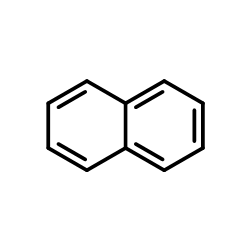 CAS#:91-20-3
CAS#:91-20-3 CAS#:85-46-1
CAS#:85-46-1 CAS#:130-14-3
CAS#:130-14-3 CAS#:15980-15-1
CAS#:15980-15-1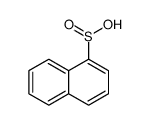 CAS#:607-33-0
CAS#:607-33-0 CAS#:7664-93-9
CAS#:7664-93-9 CAS#:7790-94-5
CAS#:7790-94-5 CAS#:856202-90-9
CAS#:856202-90-9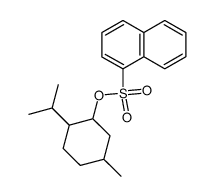 CAS#:876483-30-6
CAS#:876483-30-6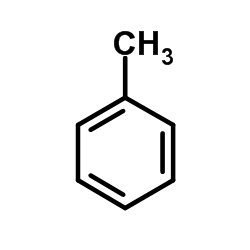 CAS#:108-88-3
CAS#:108-88-3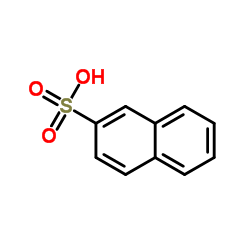 CAS#:120-18-3
CAS#:120-18-3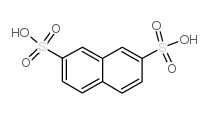 CAS#:92-41-1
CAS#:92-41-1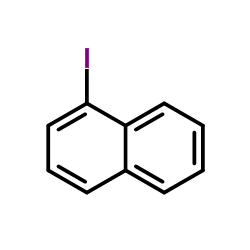 CAS#:90-14-2
CAS#:90-14-2 CAS#:90-13-1
CAS#:90-13-1 CAS#:529-36-2
CAS#:529-36-2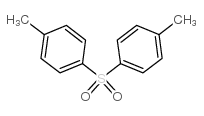 CAS#:599-66-6
CAS#:599-66-6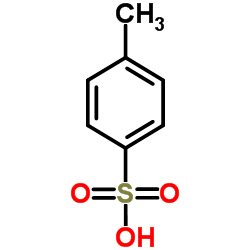 CAS#:104-15-4
CAS#:104-15-4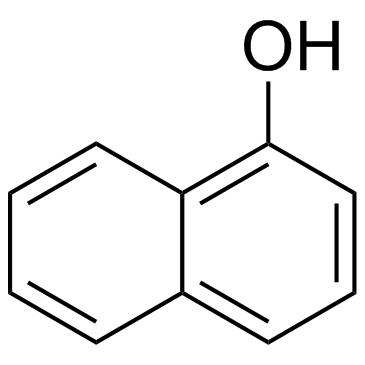 CAS#:90-15-3
CAS#:90-15-3 CAS#:83-53-4
CAS#:83-53-4